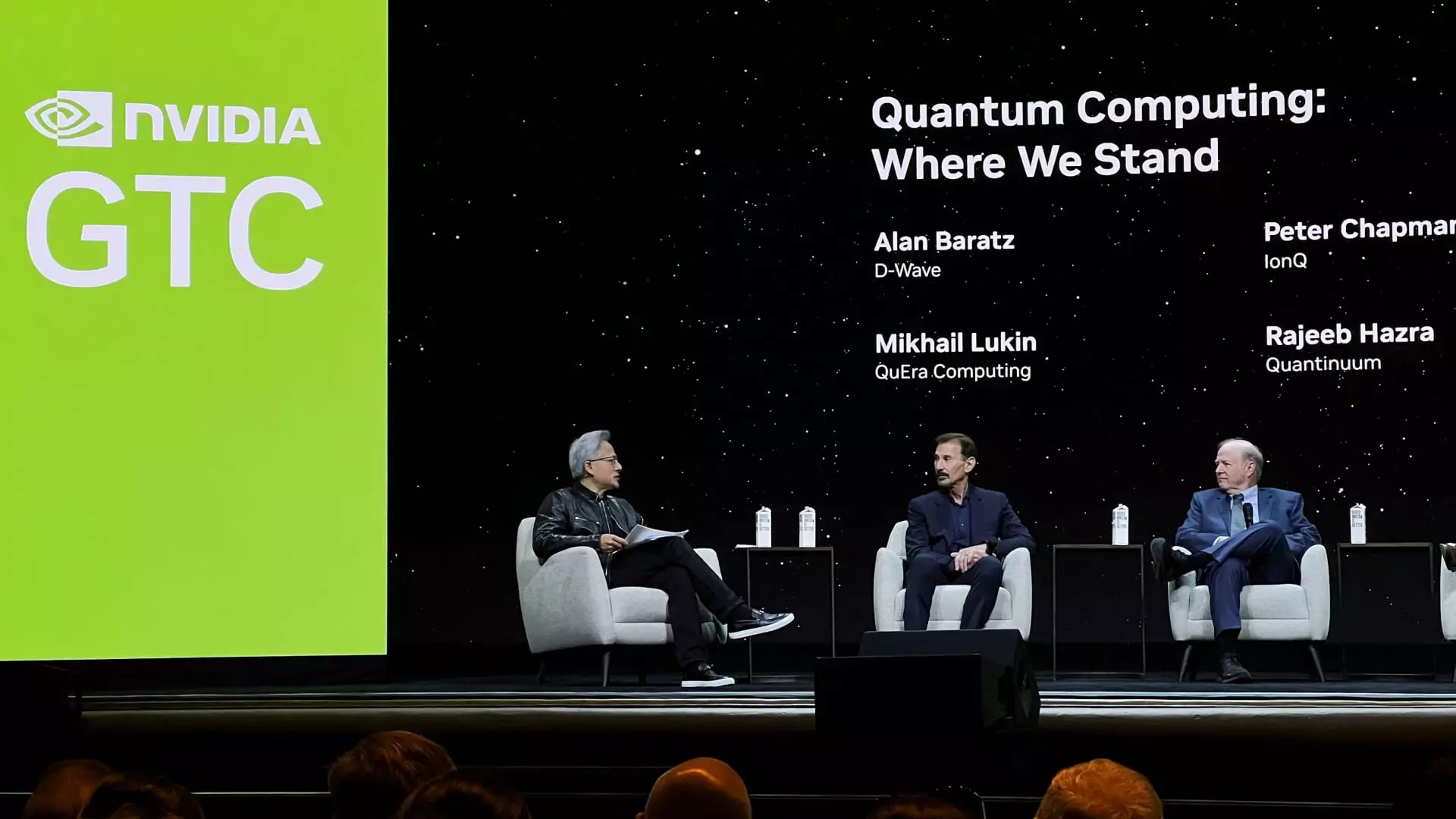Jensen Huang, the formidable CEO of Nvidia, is no stranger to ambitious statements. Recently, at the company’s inaugural “Quantum Day,” Huang aimed to recalibrate expectations surrounding quantum computing, a technology that has long been touted as the next transformative leap in tech. Earlier comments suggesting it would take at least 15 years before quantum computing would be deemed “useful” drew considerable backlash, leading to a severe sell-off in quantum-related stocks. At this recent event, Huang backtracked, claiming his earlier sentiments were misunderstood. However, the fallout was immediate—key stocks in the quantum sector, such as D-Wave and Rigetti, plummeted.
It seems Huang’s attempt at damage control inadvertently highlighted the precarious nature of the quantum computing market. Instead of climbing for cover after being hit by reality’s blunt force, Huang’s optimistic demeanor potentially revealed the crux of the problem: perception. The greater issue is not just the timeline but the very branding of quantum technology.
The Branding Battle of Quantum Computing
Huang’s remarks hit a nerve, particularly his assertion about how quantum should be marketed. His statement that calling quantum systems “computers” creates unrealistic expectations triggered a wave of skepticism. As Needham analyst N. Quinn Bolton pointed out, Huang’s proposition that quantum computing works symbiotically alongside classical systems rather than replacing them is controversial. Indeed, it raises an existential question surrounding the very nature of innovation—should we continue to label quantum computing under the same umbrella as traditional computing, or should it be positioned as a parallel evolution guided by entirely different rules?
Branding is everything in the tech world. As companies race to present their advancements, the framing of their technologies can sway investor confidence dramatically. Smiths are selling a dream of immutable, world-changing technology, yet realities persist which paint a different, less certain picture. There lies a stark contrast between the grandiose visions of quantum enthusiasts and the sobering challenges that remain unsolved.
The Cautionary Tale of Overinflated Expectations
As seen during Huang’s “Quantum Day,” the quantum industry is basking in the glow of hype, yet reality remains harsh. The double-edged sword of ambition comes with the downside of crippling investor confidence. Despite the enticing promises of quantum computing—a realm where computational power could revolutionize medicine, logistics, and artificial intelligence—the practical application is faltering and far from immediate. Investors have grown weary of lofty claims that fail to materialize.
Traditional indicators of success and potential are blurred in this esoteric domain. Huang’s statements increasingly reflect a sinking realization that expectations might have been set too high. The Quantum Defiance ETF’s performance is emblematic of a broader apprehension in the market, with a decline of more than 4% this year signifying waning enthusiasm.
Nvidia’s Role in the Quantum Dance
Despite the tumultuous landscape, Nvidia’s investments in quantum technologies mark a critical pivot point. The establishment of a research center in Boston, aimed at fostering collaboration between quantum companies and esteemed academic institutions, highlights Nvidia’s commitment to pioneering intersections between classical and quantum mechanics. Yet, purveyors of this narrative must tread carefully, as the industry navigates tumultuous waters rife with skepticism.
Moreover, the emerging technology is still dependent on classic computational frameworks—the GPUs that Nvidia specializes in. In many ways, Nvidia’s financial growth from this vertical relies on the continued relevance of traditional computing. This reality invites further scrutiny of how the tech giant will balance its involvement in both sectors without alienating investors or diluting its brand identity.
Investor Cynicism and Hope for Quantum’s Future
While Huang projects an air of optimism about the long-term prospects of quantum computing, investors remain skeptical. The duality of hope and uncertainty casts a long shadow over the industry’s future. Huang’s assertion that quantum computing could impart “extraordinary impact” if fully realized is comforting yet poignant. The opportunity for transformative impact is palpable, but the timeline remains clouded.
Skepticism is warranted; after all, many tech revolutions have begun with lofty promises before crashing against the cliffs of reality. The departure from 15 years of promise to even the more optimistic 20 years demonstrates a glaring confidence gap that investors can’t ignore. In a world that thrives on immediate results, the protracted timeline only deepens the apprehensions surrounding quantum computing’s viability. The ongoing evolution of this technology remains a high-stakes gamble, oscillating unpredictably between aspirational potential and sobering reality.


Leave a Reply